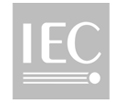SPARTA Biodiscovery: From lab setup to commercial product
Posted in OEM and custom solutions May 30th 2024

When Dr Jelle Penders and colleagues from Prof Dame Molly Stevens’ team at Imperial College London decided to commercialize their research, they turned to Prior Scientific to help develop their concept into a marketable product.
Background
SPARTA Biodiscovery is a successful start-up company that grew out of research at Imperial College, London. SPARTA® stands for ‘Single Particle Automated Raman Trapping Analysis’. In simple terms, it uses light to determine the composition of a particle by looking at the fingerprint generated by the molecules inside. By shining a laser into a sample, it ‘traps’ a single particle, and, by analyzing the signal emitted, confirms the nature and chemical composition of the particle. Many drug companies are developing therapeutics using ‘vesicles’: small structures that can be used to deliver drugs at the cellular level. Through its technology, SPARTA Biodiscovery enables accelerated and robust nanoformulation development.
From drawing to prototype
During the research phase at Imperial College, Prior Scientific supplied components for the project. However, the move towards realizing a fully commercial product began with a basic drawing of the prototype the research team had created. Prior’s brief was to turn this into a viable product using our commercial and engineering expertise to complement SPARTA’s specialist scientific knowledge.
As with any brief, our engineering team started by analyzing the requirements to determine:
- What could be achieved using existing parts or technologies?
- What third-party components need integrating?
- What elements of the new design will need innovation?
SPARTA required a blending of all three approaches.
“It has been a pleasure working with the dedicated team at Prior Scientific these last few years. There is true value in having an experienced manufacturing partner nearby with a team that we feel we can really rely on to help grow our business and product possible on the market.”
Jelle Penders, Founder and CEO, SPARTA Biodiscovery
Existing technologies and components
The system needed a focus mechanism and control electronics. Both of these we supplied from our OpenStand® platform using our highly accurate stepper motor technology. Because we could use existing, modular parts as the framework for the system, we were able to deliver a prototype for testing in a matter of weeks.
Third-party integration
As a novel, specialist system, SPARTA needed parts that Prior couldn’t supply: a camera and a class 3 laser source. Our ProScan II control electronics and the OpenStand platform are designed to work with a range of instruments from other manufacturers to allow for this type of scenario.
Innovation and industrial design
Developing new solutions is always the most challenging part of any project. For SPARTA, ensuring the safety of the laser was critical. Our engineers developed a fault-tolerant laser safety mechanism, specifically for this product, fully integrated with the third-party laser and control electronics. As well as safety, the usability and visual appeal of the final product were also essential and our team designed and built a branded enclosure for the benchtop instrument.
Testing and refining
Right from the beginning of the collaboration, we formed a cross-company project team with staff from Prior and SPARTA working closely together. As well as the regular weekly project meetings, the Prior staff were also available for ad-hoc communication to answer queries: this was a crucial part of the success of the project as no one had to wait days for a scheduled call to resolve a small point which may otherwise have caused a delay. As well as the design and build of SPARTA, Prior also arranged for EMC testing and certification: an essential requirement for a commercial product.
Contract manufacturing
With many commercial design houses, once the product design is signed off, the manufacturing is outsourced. With Prior, this transition is seamless since design and manufacturing are under the same roof.












